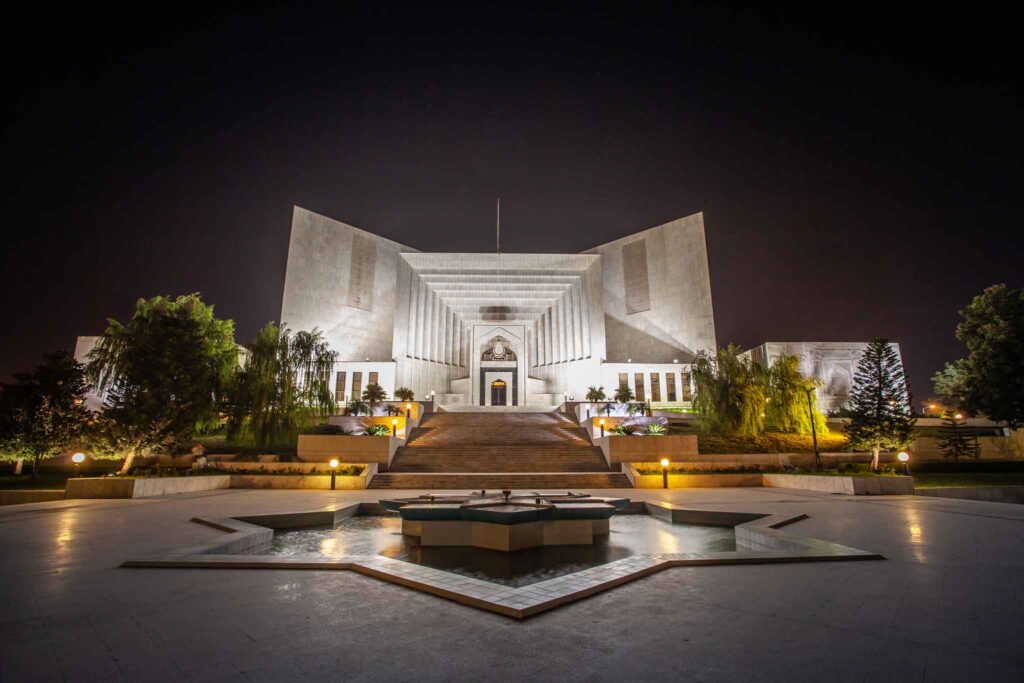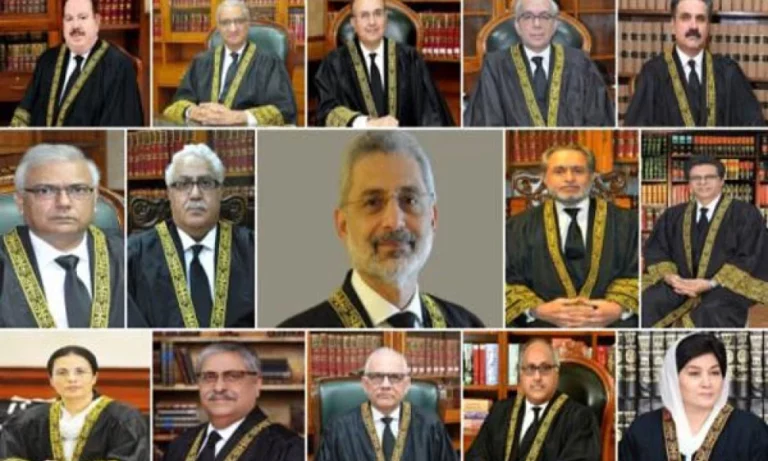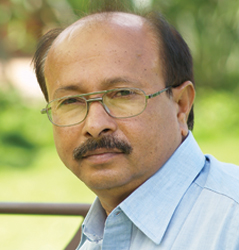By Shujauddin Qureshi
In a groundbreaking move, the Supreme Court of Pakistan recently made history by allowing live coverage of its full court hearing via the official state broadcaster, PTV. This decision, which caught both the media and legal communities by surprise, marked a significant departure from the traditional norms surrounding court proceedings in the country. In Pakistan, courts have typically prohibited video recording, photography, and mobile phone use during hearings. However, this historic moment shattered those barriers and opened a new chapter in the nation’s legal transparency.
The live coverage was dedicated to the hearing of multiple petitions challenging the suspension of the Supreme Court (Practice & Procedure) Act, 2023, which occurred on April 13. This particular day was significant not only for its legal implications but also because it marked the first day in office for Chief Justice Mr. Justice Qazi Faez Isa. On this momentous occasion, all 14 other judges of the Supreme Court were present, creating a powerful image of unity and commitment to justice within the court.
The Unprecedented Decision
The decision to allow live coverage of the Supreme Court’s proceedings was met with enthusiasm and intrigue by legal experts, media professionals, and the general public alike. It was a stark departure from the tradition of conducting court hearings behind closed doors, away from the public eye. The move to permit live broadcasting demonstrated a newfound commitment to transparency and openness within the Pakistani judiciary.
In a country where the judicial system has often faced criticism for its opacity, this decision was seen as a significant step towards increasing public trust and understanding of the legal process. It provided citizens with direct access to witness court proceedings without the need for intermediaries, such as journalists or legal analysts, to interpret and convey the events.
Chief Justice Qazi Faez Isa Takes the Helm

The live broadcast day was doubly historic as it marked the inauguration of Chief Justice Mr. Justice Qazi Faez Isa. As he assumed his role, he joined his 14 fellow judges, who symbolized the collective wisdom and authority of Pakistan’s highest court. This visual representation of unity conveyed a powerful message about the court’s commitment to upholding justice and the rule of law.
Chief Justice Isa’s leadership and vision for a more transparent judicial system were evident in his decision to allow live coverage. His tenure began with a bold and progressive step that would set the tone for his time in office. It reflected his belief in the importance of open and accessible justice for all Pakistanis.
The Impact on Transparency and Accountability
The live coverage of Supreme Court hearings has the potential to transform the way justice is perceived and understood in Pakistan. It directly empowers citizens by providing unfiltered access to the proceedings, allowing them to witness the legal arguments, debates, and discussions firsthand. This newfound transparency holds several benefits for the nation’s legal system and society as a whole:
- Enhancing Public Understanding: Live broadcasts demystify the legal process, making it more accessible and understandable for the general public. It can help citizens gain a better grasp of complex legal matters, leading to greater legal literacy.
- Increasing Accountability: Transparency fosters accountability, as judges and legal practitioners are aware that their actions are being scrutinized by a wider audience. This can lead to more conscientious and fair decision-making.
- Building Trust: By allowing the public to witness court proceedings, trust in the judicial system can be strengthened. Citizens are more likely to have confidence in a system that operates openly and transparently.
- Reducing Misinformation: Live broadcasts reduce the potential for misinformation or misinterpretation of legal proceedings. This can help counteract the spread of false narratives and rumours.
Challenges and Considerations
While the decision to allow live coverage of Supreme Court hearings is undoubtedly a positive step towards greater transparency, it also raises certain challenges and considerations:
- Privacy and Security: Protecting the privacy and security of individuals involved in legal proceedings remains a paramount concern. Striking the right balance between transparency and safeguarding the rights of individuals is crucial.
- Media Ethics: Media outlets covering the live proceedings must adhere to ethical standards and responsible reporting practices. Misuse of live coverage could have adverse consequences.
- Legal Complexity: Complex legal matters may not be easily comprehensible to the general public. Efforts should be made to simplify legal language and concepts for broader understanding.
- Overcrowding: The increased public interest in live proceedings may lead to overcrowding in courtrooms, potentially disrupting proceedings. Careful management and planning are essential.
The Road Ahead
The decision to permit live coverage of Supreme Court hearings is a significant milestone in Pakistan’s legal history. It represents a commitment to greater transparency, accountability, and public engagement within the judiciary. Chief Justice Mr. Justice Qazi Faez Isa’s leadership and vision have set a precedent for a more open and accessible legal system.
As Pakistan continues on this path of legal reform and transparency, it is essential to address challenges and strike a balance that ensures both openness and the protection of individual rights. With the right approach and careful consideration, live coverage of court proceedings can be a powerful tool for enhancing justice and strengthening democracy in the nation.
The road ahead may be filled with complexities, but the destination—a more transparent, accountable, and just legal system—is worth the journey. Pakistan’s Supreme Court has taken the first historic step, and it is now up to all stakeholders to ensure that this newfound transparency leads to a brighter and more just future for all citizens.





